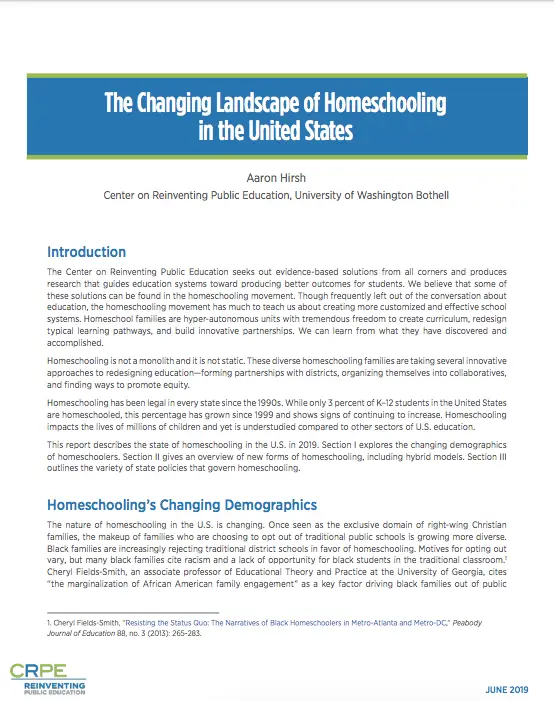Homeschoolers—and their motivations—are increasingly diverse. A number of innovations, such as online schools, microschools, co-ops, and support centers, are enabling this diversity.
Though frequently left out of the conversation about education, the homeschooling movement has much to teach us about creating more customized and effective school systems. Homeschool families are hyper-autonomous units with tremendous freedom to create curriculum, redesign typical learning pathways, and build innovative partnerships.
Homeschooling is not a monolith and it is not static; families are taking several innovative approaches to redesigning education—forming partnerships with districts, organizing themselves into collaboratives, and finding ways to promote equity.
Homeschooling has been legal in every state since the 1990s. While only 3 percent of K–12 students in the United States are homeschooled, this percentage has grown since 1999 and shows signs of continuing to increase. Homeschooling impacts the lives of millions of children and yet is understudied compared to other sectors of U.S. education.
This brief describes the state of homeschooling in 2019. It explores the changing demographics of homeschoolers, provides an overview of new forms of homeschooling, and outlines the variety of state policies that govern homeschooling.




